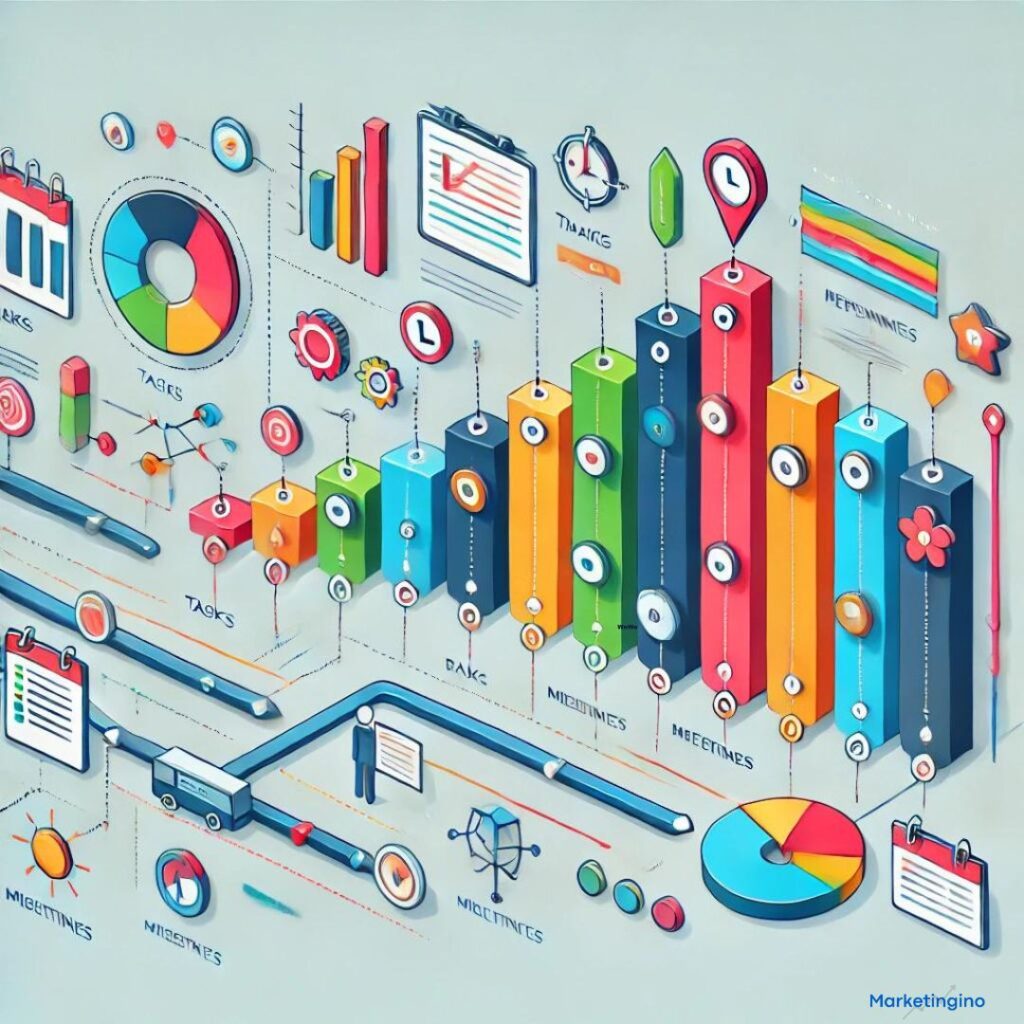Gantt diagrams, commonly known as Gantt charts, are indispensable tools in the realm of project management. Named after their creator, Henry L. Gantt, these diagrams provide a visual timeline for project tasks, enabling teams to plan, coordinate, and track specific tasks and milestones. This article explores the history, components, benefits, and practical applications of Gantt charts in project management.
History of Gantt Diagrams
Henry L. Gantt, an American mechanical engineer and management consultant, developed the Gantt chart in the 1910s. His pioneering work in project management laid the foundation for modern scheduling techniques. Initially used in manufacturing and engineering projects, Gantt charts have since become ubiquitous in various industries, from construction to software development.
Components of a Gantt Diagram
A Gantt diagram typically consists of several key components:
- Tasks: These are the individual activities that need to be completed as part of the project. Each task is represented by a bar.
- Timeline: The horizontal axis represents the timeline, divided into days, weeks, months, or even years, depending on the project’s duration.
- Bars: Each bar corresponds to a task and spans the period during which the task is expected to be completed. The length of the bar indicates the task’s duration.
- Milestones: Significant events or deadlines within the project are marked as milestones. These are often represented by diamonds or other distinct symbols.
- Dependencies: Arrows or lines between bars indicate dependencies between tasks, showing which tasks must be completed before others can begin.
Benefits of Using Gantt Diagrams
- Visual Clarity: Gantt charts provide a clear visual representation of the entire project timeline, making it easy to see the start and end dates of tasks, their duration, and their overlap.
- Task Management: By breaking the project into manageable tasks, Gantt charts help ensure that all aspects of the project are accounted for and properly scheduled.
- Dependency Tracking: Highlighting task dependencies ensures that tasks are completed in the correct order, preventing bottlenecks and delays.
- Resource Allocation: Gantt charts help managers allocate resources efficiently by showing who is responsible for each task and when they need to be available.
- Progress Tracking: As tasks are completed, updating the Gantt chart provides a real-time view of project progress, helping teams stay on track and meet deadlines.
Practical Applications
Gantt diagrams are versatile tools used in various industries and project types:
- Construction: In construction projects, Gantt charts help manage complex schedules involving multiple trades and subcontractors, ensuring timely completion.
- Software Development: Agile teams use Gantt charts to plan sprints, track development progress, and coordinate releases.
- Event Planning: For events such as conferences or weddings, Gantt charts assist in organizing tasks, from booking venues to arranging speakers or entertainment.
- Marketing Campaigns: Gantt charts help marketers plan and execute campaigns, coordinating activities such as content creation, social media posts, and advertising.
- Product Launches: Companies use Gantt charts to manage the myriad tasks involved in launching new products, from development and testing to marketing and distribution.
Creating a Gantt Diagram
Creating a Gantt chart can be done using various tools, ranging from simple spreadsheet applications like Microsoft Excel to specialized project management software such as Microsoft Project, Trello, or Asana. Here are the basic steps:
- List Tasks: Identify all the tasks required to complete the project.
- Determine Dependencies: Establish the order in which tasks need to be completed.
- Assign Dates: Set start and end dates for each task.
- Draw Bars: Represent each task with a bar on the chart, spanning its duration.
- Mark Milestones: Highlight key milestones and deadlines.
- Update Regularly: Keep the chart updated as tasks are completed and project circumstances change.
Conclusion
Gantt diagrams are powerful tools for project management, providing a clear and organized way to plan, execute, and monitor projects. By visualizing tasks, timelines, and dependencies, Gantt charts help teams stay on track, meet deadlines, and achieve project goals. Whether you are managing a small event or a large-scale project, incorporating Gantt diagrams into your planning process can significantly enhance efficiency and success.




